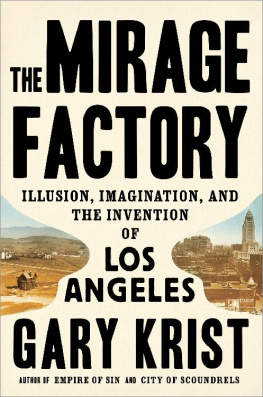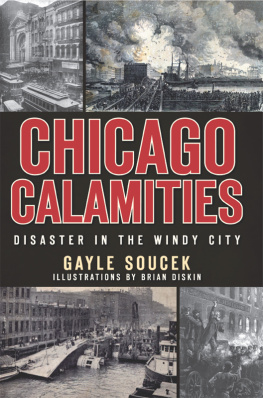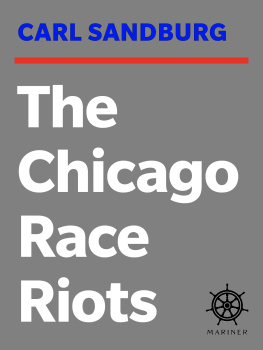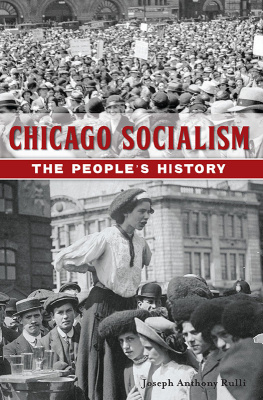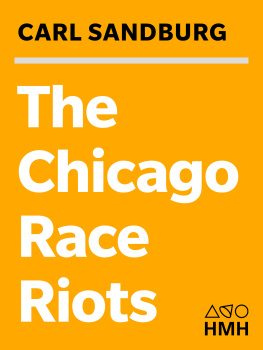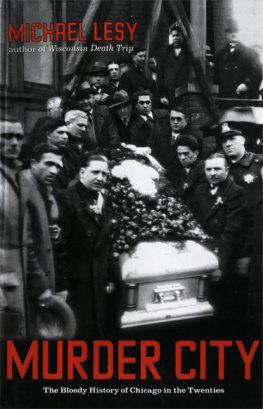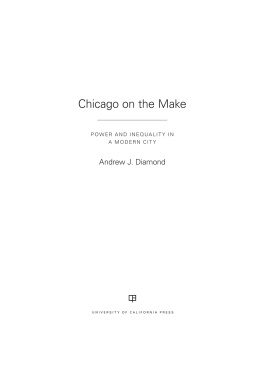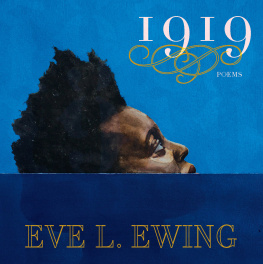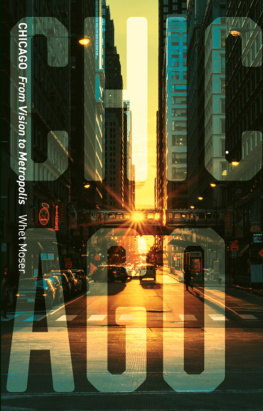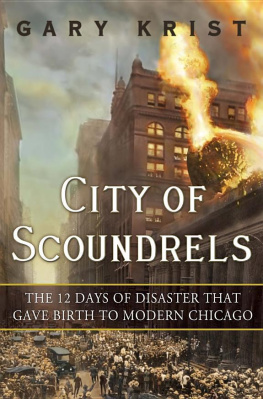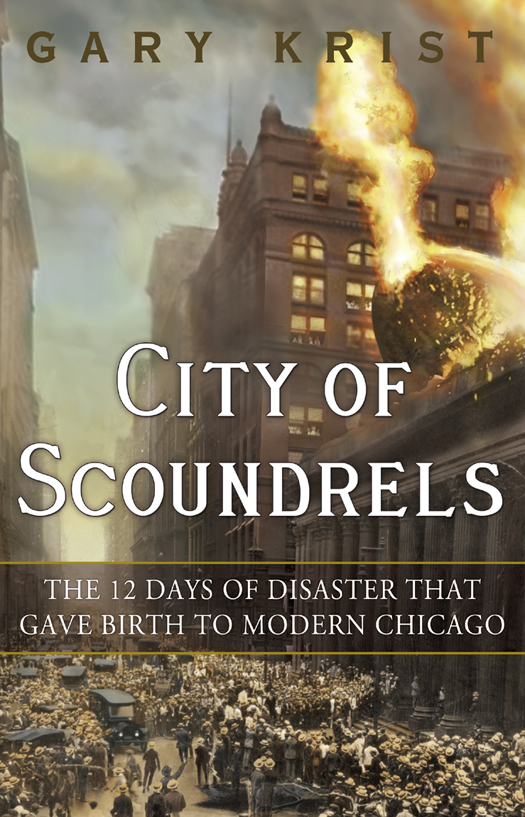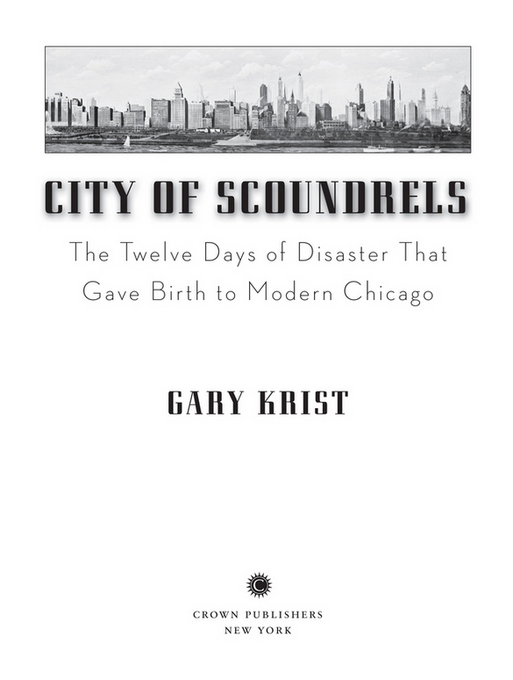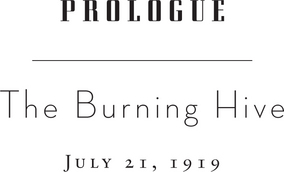ALSO BY GARY KRIST
The White Cascade
Extravagance
Chaos Theory
Bad Chemistry
Bone by Bone
The Garden State
Copyright 2012 by Gary Krist
All rights reserved.
Published in the United States by Crown Publishers, an imprint of the Crown Publishing Group, a division of Random House, Inc., New York.
www.crownpublishing.com
CROWN and the Crown colophon are registered trademarks of Random House, Inc.
Library of Congress Cataloging-in-Publication Data
Krist, Gary.
City of scoundrels: the twelve days of disaster that gave birth to modern Chicago/Gary Krist.1st ed.
p. cm.
1. Chicago (Ill.)History20th century. 2. DisastersIllinoisChicagoHistory20th century. 3. Chicago (Ill.)Civilization. I. Title.
F548.5.K75 2012
977.311042dc22 2011010906
eISBN: 978-0-307-45431-7
Map designed by Jeffrey L. Ward
Jacket design by Laura Duffy
Jacket illustration: Rob Wood/Wood Ronsaville Harlin, Inc.
v3.1
For Anna,
my favorite Chicagoan
AUTHORS NOTE

City of Scoundrels is a work of nonfiction, adhering strictly to the historical record and incorporating no invented dialogue or other undocumented re-creations. Unless otherwise attributed, anything between quotation marks is either actual dialogue (as reported by a witness or in a newspaper) or else a citation from a diary, memoir, book, letter, telegram, court transcript, or other document, as cited in the notes. In some quotations I have, for claritys sake, silently corrected the original spelling, syntax, or punctuation. Since reporters of the day lacked modern recording technology, different newspaper or other reports about the same event occasionally have slightly differing versions of what was said or done; in these cases, I have sometimes combined elements from several different accounts of an event, speech, or conversation to create what I hope is a more complete picture of what actually occurred.
CONTENTS

PROLOGUE: The Burning Hive
J ULY 21, 1919
PART ONE: Collision Course
J ANUARY 1 TO J ULY 21, 1919
PART TWO: Crisis
J ULY 22 TO J ULY 31, 1919
PART THREE: From the Ashes
A UGUST 1, 1919, TO LATE 1920
EPILOGUE: The Two Chicagos
M AY 14, 1920
Great wars have been followed by an unusually large number of killings between private citizens and individuals.
C LARENCE D ARROW
It came to me then that I had been fighting the wrong war. The Germans werent the enemy. The enemy was right here at home.
H ARRY H AYWOOD
Chicago aint no Sunday School.
B ATHHOUSE J OHN C OUGHLIN
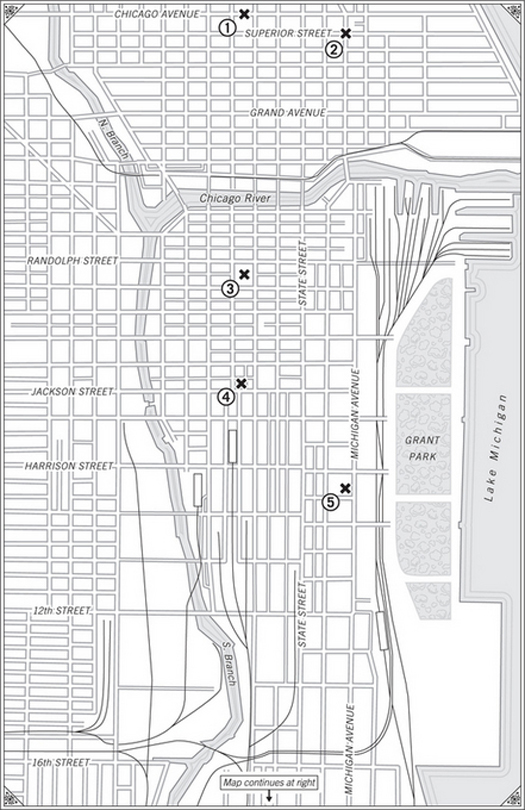
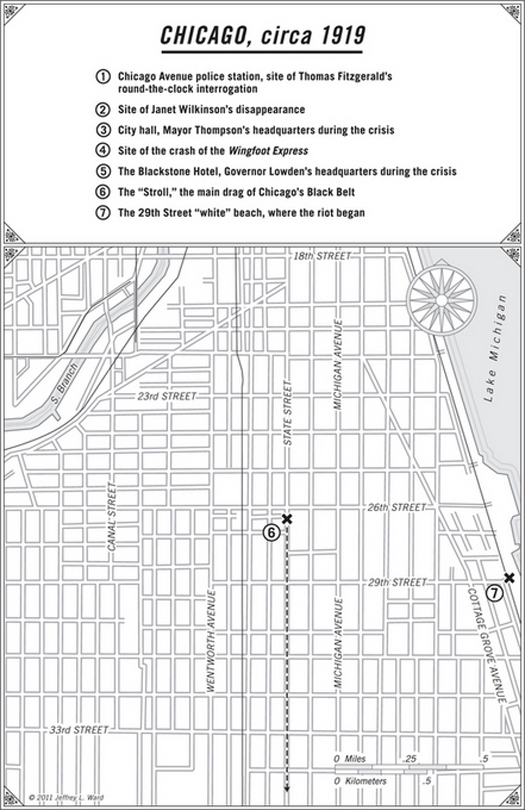
T HE S PANISH INFLUENZA had nearly killed Carl Otto that summer, but now the young bank telegrapher, clearly on the mend, was eager to return to work. On the warm, sunny morning of Monday, July 21, therefore, he rose early to prepare for his commute. His wife, Elsie, was concerned about his health and tried to discourage him. Carl was still not well, she insisted, and his extended sick leave didnt officially end until tomorrow. Couldnt he put off work for just one more day?
But Carl was adamant. He truly enjoyed his job at the bank and valued his reputation as a conscientious worker. And although he knew better than to make light of his illness (the recent flu epidemic had already killed more people than the Great War had), he felt he should delay his return no longer. He was, after all, an employee of one of Chicagos premier financial institutions: the Illinois Trust and Savings Bank, located right in the heart of the downtown Loop district. Standing at the foot of the Chicago Board of Trade Building on the corner of LaSalle Street and Jackson Boulevard, the bank was an important conduit for the countless transactions generated each day by the largest and most significant commodities exchange in the world. New Yorks Wall Street may have been the center for the trading of company shares, but it was in the pits of the Chicago Board of Trade that the fate of real thingsof wheat, corn, hogs, lumber, cattle, and oatswas determined. Populations worldwide were dependent on it for the raw fuel of civilization itself.
As telegrapher and all-around utility man for the Illinois Trust, Carl Otto was a vital cog in the complex machinery of that market. From his telegraph desk in the banks central courtyard, right under the buildings distinctive two-story skylight, he kept his employers and their clients in close communication with the financial centers of the East Coast. As a translator for the Foreign Department (Carl had been born in Germany and spoke several languages), he also facilitated transactions with companies in the grain-importing countries of Europe and Asia. Besides, Monday was usually the banks busiest day of the week. Carl felt that he had to go back.
The couple discussed the matter over breakfast. In Elsie Ottos opinion, the worldwide commodities market could surely survive without her husband until Tuesday. She argued that their son, Stanley, a six-year-old orphan whom the couple had adopted some time before, would appreciate another day of his fathers company. But Carl would not be dissuaded. Determined to be punctual on his first day back, the telegrapher said good-bye to his wife and son, left their little cottage at 4219 North Lincoln Street on the citys far North Side, and headed for the Loop.
* * *
At roughly the same hour about twelve miles southat 5448 Calumet Avenue, in the citys Washington Park neighborhoodEarl H. Davenport was also just leaving home for his morning commute. After years of working as a sportswriter for various newspapers around town, Davenport had recently switched careers. He had taken on a public relations job representing the White City Amusement Park, South Side Chicagos most popular summer recreation center. Named after the worlds fair that had done so much to boost Chicagos image a generation earlierthe 1893 Worlds Columbian Exposition, also known as the White Citythe park was an entertainment extravaganza, a thirteen-acre playground of bowling alleys, shooting galleries, roller coasters, ballrooms, and novelty attractions such as the Midget City and a walk-through diorama depicting the famous Johnstown Flood. Handling the publicity for such a place was Davenports idea of fun.


